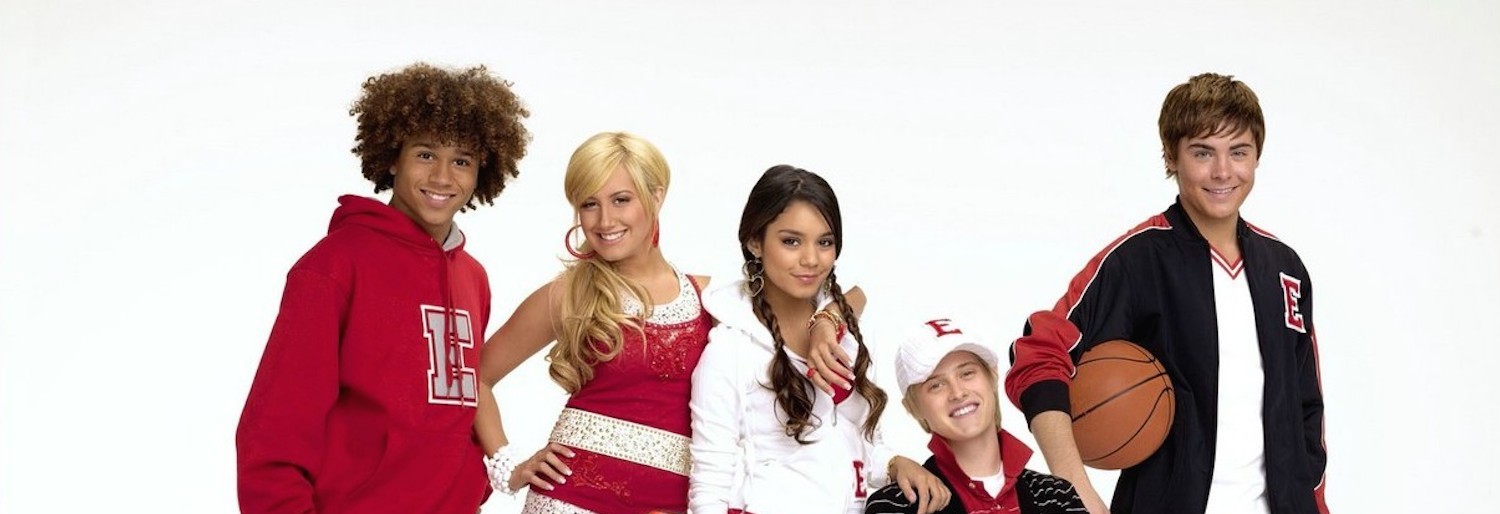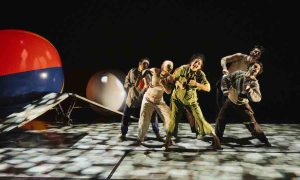The belief that dance is a sport will continue to be a debate for years to come. Despite its artistic essence, the athleticism and training required for many styles makes dance as—or perhaps even more—physically demanding than some of the toughest professional sports. Dance competitions such as Dance Masters of America and the Youth America Grand Prix as well as television shows like So You Think You Can Dance have capitalized on the notion that dancers can be judged and scored based on categories such as technical execution, artistic virtuosity, and overall performance quality.
We can continue to contemplate the idea of dance as a sport—but what about the influence of sports within dance itself? Sports such as baseball, basketball, and football have been exciting choreographic inspirations for dance makers throughout the years. What sports-centered choreography in movies and musicals have been successful—and why? How were choreographers able to translate the rough and toughness of boxing onto the brilliant Broadway stage? Or, how did dancers negotiate the improvisational, spontaneous essence of soccer within set choreography? To try and answer these questions, Dance Informa took a look at a few notable sports-focused musicals and movie-musicals from the past fifty years.
I Love Melvin (1953) is a fun, light MGM movie musical starring Donald O’Connor and Debbie Reynolds. In one wonderfully comedic scene, Reynolds plays a human football—yes, you read that right—in a kitschy Broadway show. Robert Alton choreographed the infamously outlandish football ballet, “Saturday Afternoon Before the Game.” The nearly five-minute number begins with a band of cheerleaders and a mob of enthusiastic sports-fans ready for the game. The stadium set piece opens to reveal a colorful football field with two teams of synchronized dancers. Alton, who also choreographed “White Christmas” and supposedly discovered Gene Kelly, was known for synthesizing popular movement and dance. The football players hustle, lunge, and run in unison. The precision choreography seems “dancey,” but many of the movements are just part of the sport. The quick feet of an agility drill becomes a grape vine step. The hunched posture of the players at the starting like turns into a sort of Jack Cole contraction. And then…Debbie Reynolds comes flying in from stage right to be caught—like a football—in the referee’s arms. Reynolds is then “partnered” by the footballers: she is thrown, carried, and even kicked (with the help of some special effects) by the two teams. After watching this clip, go back and take a look of some professional football on TV today—you’ll be cheerfully surprised.
Damn Yankees (1955) was the second Broadway musical choreographed by up-and-coming genius, Bob Fosse (his first was The Pajama Game in 1954). In the dance sequence from “Shoeless Joe from Hannibal, MO,” the team of hokey pokey ballplayers dances with wooden bats and leather mitts but pantomime the actual baseball. The orchestrations incorporate the hard “whack” of a hit or the arching “whiz” of a home run. The choreography takes movements you might see on a baseball field and “dancifies” them, if you will. The leap of a fielder to catch a fly ball becomes a barrel turn. The attempt to steal second base becomes a series of chassés. The slide into home base turns into a somersault. And the batter’s wind up for his pitch transforms into comically juicy hip rolls. Playbill.com notes that Damn Yankees may be revived as a film musical starring Jim Carey and Jake Gyllenhaal. While director, Todd Graff wants to nix the famous Fosse choreography, the new movie revival, he says, will include contemporary baseball references such as the use of steroids.
You probably aren’t as familiar with The Boys in the Photograph (The Beautiful Game) (2000), a lesser-known musical by legendary composer, Andrew Lloyd Webber. The story can be described as a sort of Irish West Side Story: an amateur soccer (or, football) team torn apart by religion and romance. The choreography (by Aussie, Meryl Tankard) pantomimes soccer—the actors kick, pass, and score with a made-up soccer ball. This innovative idea requires more imagination and attention from the audience as they must focus and follow the path of the ghost soccer ball. But choreographing around an imaginary prop adds safety around the production numbers because actors don’t risk losing control of a physical prop. “The choreography,” writes critic Georgina Brown, “–the ballet of football, with every player ducking and diving, sniffing and spitting, kick-dancing and Riverdancing in his own way–is superb.” Tankard’s work earned her an Olivier Award nomination for bringing the balletic beauty of soccer to the great stage.
When talking about sports in dance, I simply couldn’t leave out the tween made-for-TV movie sensation, High School Musical (2006). Disney’s High School Musical, with choreography by Kenny Ortega, includes the ever-catchy “Get Your Head in the Game,” a full-on basketball production number where Troy struggles between his commitment to the basketball team and his secret desire to perform in the school musical. The choreography is hip-hop—but with an improvised flare. The boys only dance in unison towards the end of the number. It is as if the song parallels Troy’s transition from pure basketball player to musical performer. This final synchronized dance break is choreographed with individual basketballs for each player. Like the choreographers mentioned above, Ortega incorporates typical basketball footwork and drill movement into the stylized choreography. Ortega, who also directed the movie, also takes advantage of using the camera angles as elements of the choreography (overhead shots á la Busby Berkeley, close ups, etc.).
Lysistrata Jones (2011)
The 2011 Broadway musical, Lysistrata Jones, tells the Greek myth of Lysistrata in a contemporary college setting. Instead of withholding sex from men who refuse to quit their warring ways, a gang of college gals refrains from putting out until their basketball-playing boyfriends finally win a game. Before rehearsals even started, the entire cast was thrown into a weeklong basketball camp complete with an NBA hall-of-famer, Chris Mullin. The choreography, (and direction) by Dan Knechtges (Xanadu, 25th Annual…Spelling Bee), came next. It’s quite a bit more “dancey” than “High School Musical” in the sense that choreography on stage often needs to be more dynamic (leaps, turns, etc.) when there are no camera angles to direct the audience’s attention. And, unlike The Boys in the Photograph, Knechtges choreographs with the basketball. Passing, dribbling, and shooting needs to not only be accurate, but also in time with the music! While this Broadway musical didn’t last long on stage, Playbill.com also suggests that Lysistrata Jones may be turned into a movie within the next few years.
Rocky (2014)
The recent Broadway musical, Rocky, didn’t break any box office records—in fact, it closed in just over five months. But the show did transform the depiction of sports on stage. The creatively designed stage combat even scored the musical a Tony nomination for Best Choreography (choreographer: Kelly Devine, boxing choreographer: Steven Hoggett, asst. choreographer: Patrick McCollum). The group of choreographers trained at Gleason’s boxing gym in Brooklyn even before production started for Broadway. Boxing is essentially stage combat, which is performed in theatre all the time. But the fight scenes in Rocky—one of which is twenty minutes long—are different. “The actors are making contact in the fights,” says Hoggett in a NY Daily News interview. “We’ve worked slowly, very slowly, to build up the speed and the intensity of the punches. We’ve put in a lot of hours to see how far we can take the amount of contact. We spend hours practicing so the actors never fear getting hurt.” Additionally, in an interview with Theater Mania, McCollum noted, “It’s a very tricky thing, especially when there’s music and a beat happening underneath. You start to see [the actors] groove a little bit while they’re boxing, and it’s about telling them you just have to box and be technically proficient!” The sport was not at all supposed to resemble a dance. This makes Rocky unique from the other sports-musicals previously mentioned. But while the essence of “dance” was stripped away, it was still all about choreography.
By Mary Callahan of Dance Informa.
Photo (top): Disney Channel’s “High School Musical 2” stars Corbin Bleu as Chad Danforth, Ashley Tisdale as Sharpay Evans, Monique Coleman as Taylor McKessie, Vanessa Hudgens as Gabriella Montez, Lucas Grabeel as Ryan Evans and Zac Efron as Troy Bolton. Photo by Bob D’amico, courtesy of the Disney Channel.
















Pingback: The Influences of Sports within Dance | Mary Callahan